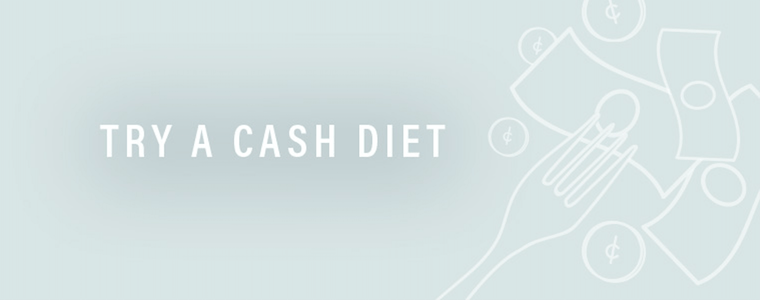How to Hit Refresh on Your Finances—and Get a Jump Start on Your Savings
You're getting back into the swing of your usual routine, but still have some months before the holiday crazy hits. And rather than starting 2018 with resolutions to dig yourself out of debt (the biggest source of stress for Americans), you can sail into the new year with some actual savings under your belt—if you start now. So as you Marie Kondo your home and overhaul your fitness routine this season, carve out some time to turn your attention to your budget.
Here are Erin Lowry's 5 tips for getting your finances under control.

Know your numbers—and your goal line
“Yes, it’s terrifying to log into all of your accounts and really face your finances,” says Lowry. But you can’t start getting things back in order if you don’t know where you’re starting from. So size up all of your accounts—student loan balances, credit card debts, savings and bank accounts, personal loans from your parents—and put everything into one spreadsheet. Trying to improve every number at once will probably make you wave the white flag of defeat, so Lowry recommends picking just one actionable goal that you want to accomplish this fall.

{{post.sponsorText}}
Having the usual recommended six months of savings socked away feel too crazy? Aim for $500 or $1,000 instead. You’ll be better off than most Americans: A recent Bankrate survey found that just 41 percent of people have an emergency fund to draw from for unexpected expenses. And while it might seem counterintuitive to save money while paying interest on your credit cards, having a bit of scratch set aside will help you break the plastic habit, points out Lowry. Without savings, you’re doomed to charge every busted muffler or burst pipe (or leggings splurge...) that pops up. Having an emergency fund helps you break free of the credit cycle.
Try a cash diet
Yes, crash diets are generally a bad idea. But when it comes to your finances, challenging yourself to spend as little as possible can give you a giant confidence boost and some serious momentum toward your fall goals. “I always recommend people start with a cash diet for two weeks,” says Lowry. “That goes double for people who have ever gotten a surprising credit card bill, which is a direct byproduct of not knowing what you’re spending.”
What's a cash diet? Withdraw enough funds to cover your day-to-day expenses, from groceries to gas to movie tickets. Studies even show that people tend to spend less when they’re using cash, in part because parting with physical money makes more of a psychological impression than swiping a card. You’re also more likely to pay attention to how you spend your money—and reconsider some of those spending decisions—when you’re watching your wad of cash dwindle, says Lowry.
Own your (cash) flow
Rather than sketch out a budget based on estimates, pull out your last three bank statements and average your actual totals by category (food, rent, sneakers, fitness classes). If not, it’s too easy to overlook some things, like streaming services, or underestimate others. Now that you’ve got a this-is-what-you-spend budget, see where you can rein in your spending. That might mean overhauling one category (such as nixing your daily Sweetgreen salad—meal prep, FTW) or trimming a few categories less dramatically.
Give your savings a pet name
Want the motivation to stick to your budget and make progress on your goals all fall long? Lowry’s favorite savings hack is to open several savings accounts, then give each a descriptive name: Holiday Presents, Costa Rica 2018, New Car Fund, Emergencies. “Renaming your accounts to reflect exactly what you’re saving for is way more motivating than one big ball of savings that’s not connected to anything emotionally,” she says.
Telling a friend about your savings goals can be another way to stay on course long after the temps drop. A Dominican University of California researcher found that more than 70 percent of people who shared weekly progress reports with a friend were successful at meeting their goals—including financial ones—compared to just 35 percent of people who kept their goals to themselves. Plan to have $1,000 in the bank before the ball drops on New Year's Eve? Or pay for your Thanksgiving airfare in cash this year? Telling your BFF may be a great place to start.
Make a New Year's date with your moolah
In a perfect world, you’d check your finances every week (Lowry says it takes just 15 minutes to run the numbers on Sunday mornings). But if lying down in traffic sounds more appealing, fear not: You can pencil in another financial reset for the new year, to see where you are in your goals, to adjust your budget if anything’s changed, and to set your sights on the next target. “Remember, you’re the chief financial officer of your own life,” says Lowry. “And no one cares more about your money than you do.”
Originally published on September 18, 2017; updated on September 5, 2018.
Looking to cut back on your takeout spending? Snag these tools to upgrade your meal prep operation. And here's the inspiration you need to name one of your savings accounts "Wellness Retreat."
Loading More Posts...



